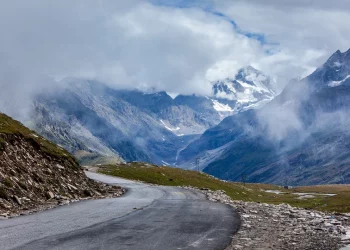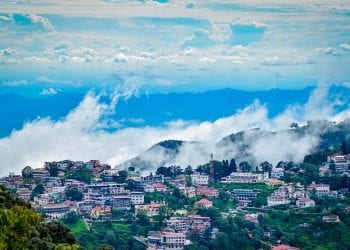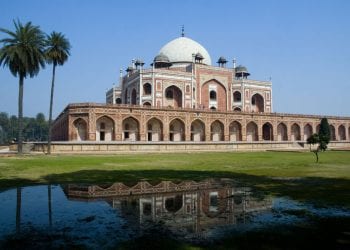Experience Heritage and Spiritualism with a Tour of the Temples in Ayodhya
Ayodhya is widely regarded as the birthplace of Lord Rama, is a place that attracts pilgrims from far and wide to seek divine blessings. The pious city, located in the state of Uttar Pradesh, boasts of a range of tourist attractions that are scattered all over the place. Most of these are religious attractions and have some interesting history associated with them and you would be surely enchanted once you come to know of them.
Ayodhya, located on the banks of the Sarayu River, is regarded as one of the most sacred places to visit in India by the Hindu community. It is famed for its historical and mythological stories, beautiful temples, legends surrounding the Hindu epic Ramayana and Vishnu and much more. Being a town of spiritual importance, there are a lot of beautiful and well-known holy places to visit in Ayodhya which provide a religious as well as cultural insight into the rich heritage of the city. The city houses popular temples and shrines which are thronged by a profusion of devotees from all over the country.
What to expect during an Ayodhya trip?
Ayodhya has great historical and religious significance and is an ancient seat of learning according to the holy Hindu texts. Thanks to innumerable and diverse religious sites in Ayodhya, travelers are bound to be thoroughly engaged. For history buffs or people with interest in Indian mythology, this great place will give you a unique insight into its heritage sites, culture, traditions, and people, through its beautiful temples. Besides being a renowned Hindu pilgrimage center and an important tourist destination, the small, quiet town is known for its immaculate museums, historical monuments, imposing structures and scenic beauty.
When to visit Ayodhya?
Being a religiously significant city, Ayodhya is frequented by travellers for sightseeing and tourist attractions. While the places remains evergreen round the year, October to March is considered as the best time to visit Ayodhya, when the weather remains delightful to enjoy your sightseeing plans as the entire place looks spellbinding with temperatures hovering at a pleasant 23 degree Celsius. Being a popular tourist destination, there is no dearth of places for an affordable stay in Ayodhya, and the city has host of lodging facilities and hotels to help you discover and find delightful and authentic experiences as per your taste and pocket size. In fact, hotels in Ayodhya present a broad range of amenities so you can opt for a hotel that matches your taste and budget in order to enjoy your sojourn at this place to the fullest.
From a plethora of ancient temples, imposing museums, colorful streets, and bazaars to urban chic neighborhoods and beautiful gardens, Ayodhya offers its visitors an abundance of holy places to visit. Below is a list of top six temples in Ayodhya that speak out loud of the city’s cultural and religious heritage. Most temples are situated at a walking distance from each other, so it’s easy to cover all these places in a matter of a few days.
Top 6 Temples To Visit In & Around Ayodhya
1. Ramjanma Bhoomi
This holy place is believed to have housed a temple for Lord Ram once, which was demolished as per Emperor Babur’s decrees and instead a mosque was built on the same location. Of all the holy places to visit in Ayodhya, Ram Janam Bhumi- Babri Masjid, has been the subject of the greatest media attention and coverage. Following years of controversies, the temple is now open to the public. The temple is the spot which is believed to be the birthplace of the legendary King Ram. The Babri Masjid no longer stands in its former magnificence, and only rubbles can be seen. Ram Navami, Dussehra, and Diwali are said to be the best time to visit the place to witness the biggest festivals celebrated with great vigour and pomp along with several song and dance performances, special rituals and pujas. A visit to this charming temple would surely leave an indelible mark on your mind forever.
Address: Sai Nagar, Ayodhya
Timings: 7:30 AM to 12:30 PM and 3 PM to 7:30 PM, open all days
2. Hanuman Garhi
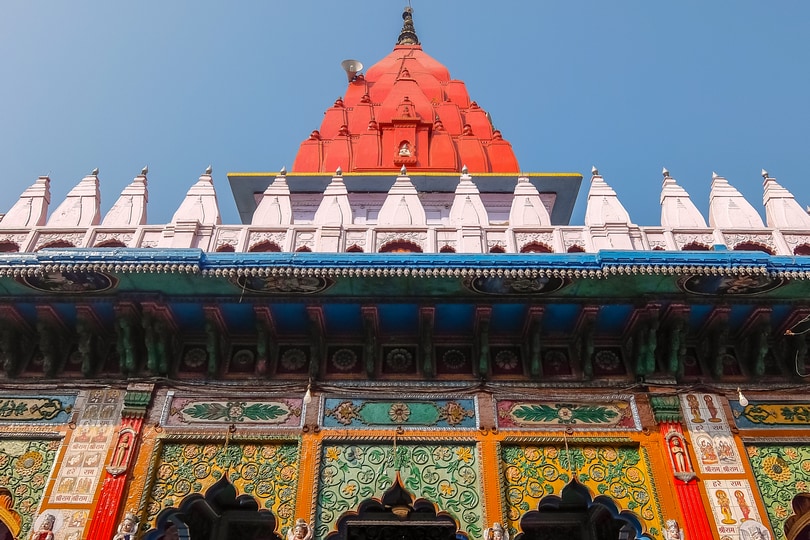
Of all the sacred places to explore in Ayodhya, Hanuman Garhi is one that has made a place for itself not only in the minds of its ardent devotes, but also as a major tourist attraction in Ayodhya. Located right in the heart of the city, the holy place is one of the most popular religious shrines in Ayodhya, and is a must visit. Legend has it that all your sins get washed away and your wishes are fulfilled after a visit to this shrine, and as a result, it is thronged by devout Hindus round the year. A statue of Mata Anjani with baby Hanuman in her lap is enshrined in the inner sanctum of this cave temple. The place is also well worth a visit owing to its impressive structure flaunting admirable architectural skills, with circular bastions at each of its corner. The temple takes on a vibrant form during main festivals like Ram Navmi, Ram Leela, Diwali, Dusshera and Hanuman Jayanti that are celebrated with utmost gaiety. The temple perched atop a mountain, looks absolutely stunning during the festive season.
Address: Sai Nagar, Ayodhya
Timings: 6 AM to 12 PM and 5 PM to 8:30 PM, open all days
3. Nageshwarnath Temple
According to legend, this temple was built by Lord Ram’s younger son Kush, an important character of the epic Ramayana. Once Kusha lost his amulet while bathing in the Saryu River and tried to find the same but all his efforts failed, and he kept thinking that a bad omen had befallen him and this was why he could not find out the amulet. But the amulet was actually picked up by a Nag Kanya who had fallen for him. When she returned the amulet to the young warrior, she won his appreciation and admiration. Since the Nag Kanya was an ardent follower of Lord Shiva, Kush erected the Nageshwara Temple at Ayodhya in memory of her. While the rest of the city was covered with thick forest, this temple has been able to retain its original charm from time immemorial. The temple structure displays semi-divine Nagas worshipping Lord Shiva. The occasion of Shivaratri in March is celebrated with pomp and gaiety, and the whole place has a very joyful ambience.
Address: Near Faizabad, Ayodhya
Timings: 5:30 AM to 12 PM and 5 PM to 8:30 PM, open all days
4. Kanak Bhavan Temple
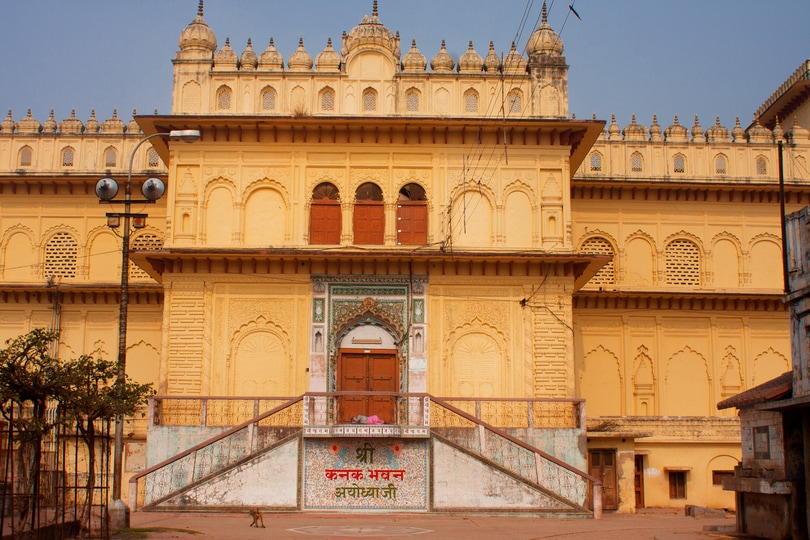
Popularly called Kanak Sone ka Mandir, the temple derives its name from the richly ornamented idols of Lord Rama and Goddess Sita that are adorned with a large amount of gold ornaments. The Kanak Bhawan Temple continues to be a special attraction and one of the top sacred places for pilgrims and tourists alike. The splendid sunrise and sunset from the spot where the temple is located is a beautiful sight. According to Indian Mythology, Kaikeyee, who was responsible for exiling Lord Rama and his wife Sita later built this temple for Sita as a mark of repentance. There are musical performances in the black and white tiled courtyard during evening hours, which is a major attraction among visitors.
Address: Tulsi Nagar, Ayodhya
Timings: 7:30 AM to 12 PM and 5:30 PM to 8:30 PM, open all days
5. Sumantanath
Ayodhya is not only touted as one of the most important Hindu pilgrim place but also holds equal importance among the Jains. Kesari Singh, the treasurer of the Nawab of Faizabad is said to have built these temples to commemorate the birthplace of some of the Jain tirthankaras here. One of the most holy places to visit in Ayodhya for the Jain community, the place houses five of the twenty four tirthankaras who were said to have been born on this pious land. Considered to be the stronghold of the Suryavansh dynasty, the tourist destination is situated amidst narrow lanes, sprawling temples and roadside shops selling knick knacks. Sumantanath is a group of ancient Jain temples, located near the Ramkot citadel. Beautiful inscription on the walls of these temples foretell the advent of Jainism and the many thirthankaras and their preaching.
Address: Sumantanath, Ayodhya
Timings: 6 AM to 11:30 AM and 5:30 PM to 8 PM, open all days
6. Sita ki Rasoi
Situated on the north-western side of Ayodhya, Sita ki Rasoi is one of the offbeat religious sites in Ayodhya. It is a temple turned into royal kitchen, of Goddess Sita. The temple features a model version of the ancient kitchen in one corner, with symbolic kitchen utensils, rolling plate and rolling pin, and the other end of the temple premises occupies idols of the four brothers Ram, Lakshman, Bharat and Shatrughan along with their wives Sita, Urmila, Mandavi and Srutakirti. The temple holds symbolic value as Goddess Sita is also known as Goddess Annapurna or the Goddess of Food. Legend suggests that the Goddess inculcated in all humanity the power to share and feed the poor and the needy, and fed all of mankind in addition to her own family. Even today, the priests carry on the same tradition and every day free food is served to everyone who visits and is hungry. You can choose to make a voluntary donation while paying homage.
Address: Faizabad, Ayodhya
Timings: 6:30 AM to 12:30 PM and 4:30 PM to 8 PM, open all days
Ayodhya which served as the erstwhile capital of the regional kingdom of Awadh, continues to be one of the most enthralling religious destinations, covered in the holy blanket of spirituality and devotion, and is totally worth visiting. Take a plunge into the world of spiritualism, and plan to embark on a pilgrimage tour and visit the above mentioned places that will provide a sneak peek into the ancient myths and cultural heritage of Ayodhya.
Recent Posts
Top Picks

- OYO
 15 April, 2024
15 April, 2024 - Cultural Tour

- OYO
 15 April, 2024
15 April, 2024 - Cultural Tour

- OYO
 15 April, 2024
15 April, 2024 - Cultural Tour

- OYO
 15 April, 2024
15 April, 2024 - Cultural Tour

- OYO
 15 April, 2024
15 April, 2024 - Cultural Tour

Please rotate your device
Please go back to portrait mode for the best experience




 April 15, 2024
April 15, 2024 